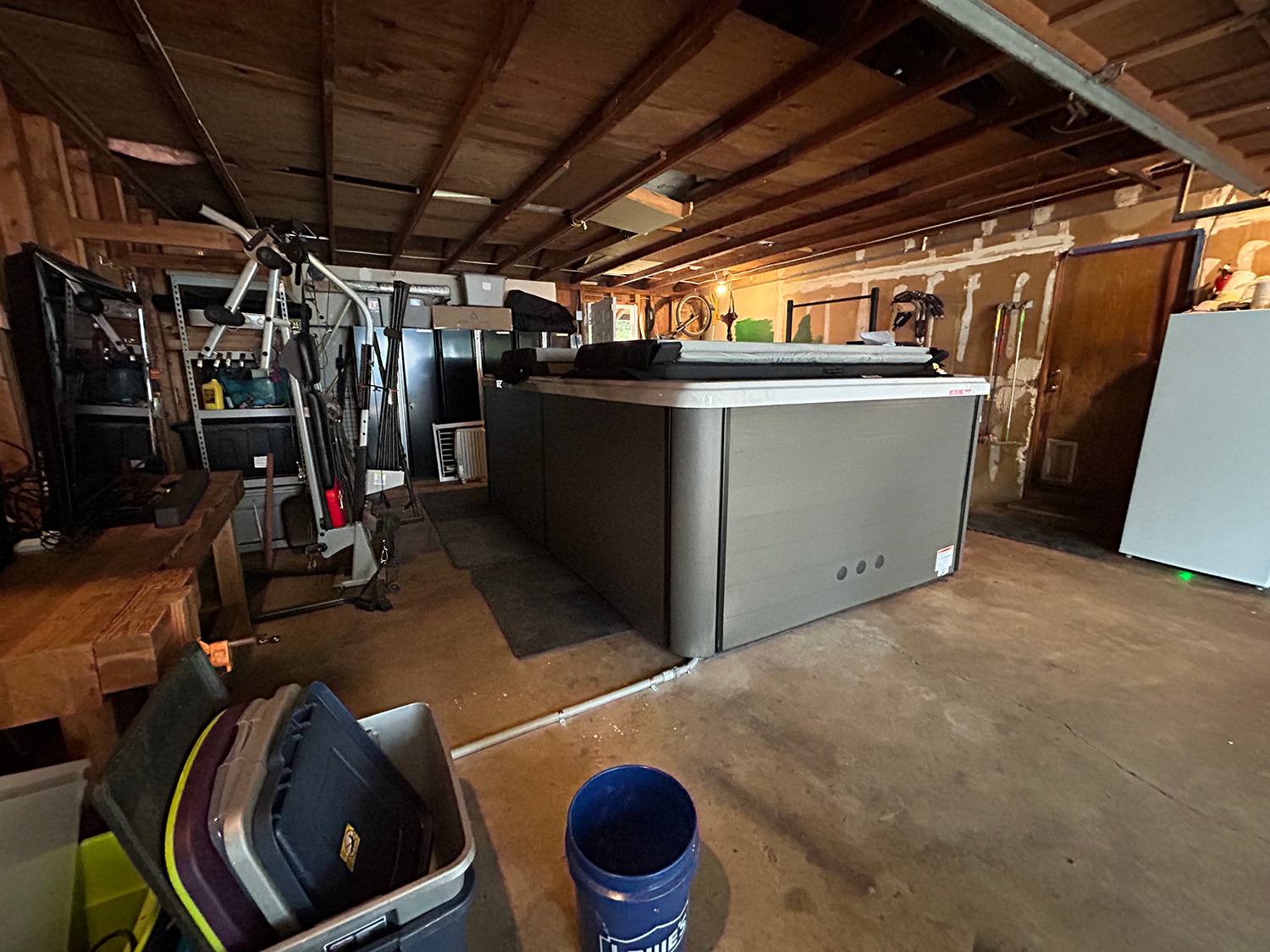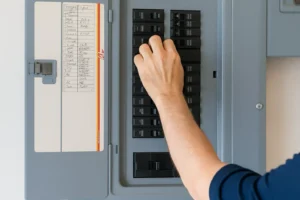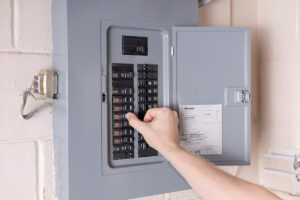If you’re dreaming of relaxing in a warm soak without going outside or spending time filling a bathtub, installing a hot tub in your basement or garage can be a great solution. But before you dive in, there are several critical safety and technical considerations to ensure your indoor hot tub setup is both safe and effective.
Electrical Requirements for Indoor Hot Tubs
Whether you’re planning a hot tub in your basement or a hot tub in your garage, the interior electrical setup is non-negotiable. All measurements below start at the inside wall of the hot tub, where the water is.
- The hot tub must be installed at least 10 feet away from any electrical source, including outlets and lighting. This prevents accidental shocks and ensures the water and electricity remain safely separated.
- The receptacle supplying power to the hot tub needs to be within 6 to 10 feet and must be GFCI (Ground Fault Circuit Interrupter) protected.
- A GFCI disconnect must be installed within 5 feet and within sight of the hot tub. This safety device cuts off electricity immediately if it detects a fault, preventing potentially life-threatening accidents. This requirement applies to both permanent and inflatable hot tubs because even portable models need the same precautions.
Ventilation Is Key
One of the biggest risks of placing a hot tub indoors is moisture buildup. Excessive humidity can lead to mold growth, wood rot, and even structural damage. Proper ventilation is essential, whether in a basement or garage. Consider installing a dedicated ventilation system or dehumidifier to keep humidity levels in check and protect your home.

Can You Put a Hot Tub in a Basement or Garage?
Yes, but there are a few important factors to consider (other than electrical):
Floor Strength: Ensure your floor can support the weight of a filled hot tub. An average hot tub can weigh thousands of pounds when filled.
Access and Clearance: Make sure there’s enough room to maneuver the tub into place. Basements and garages often have tight spaces that can complicate installation.
Electrical Setup: As mentioned above, follow the GFCI and distance guidelines strictly. Improper installation can be dangerous and may void warranties.
Ventilation: Basements especially require dehumidifiers and proper airflow to prevent moisture damage.
This is why professional hot tub installation is so important!
Inflatable Hot Tubs in Basements and Garages
If you’re considering an inflatable hot tub in your basement or garage, the rules don’t change. Electrical safety and ventilation requirements are identical to a permanent tub. While inflatables are easier to set up and move, they still need:
- A 10-foot distance from electrical outlets and fixtures
- A GFCI disconnect within 5 feet
- Adequate ventilation to prevent mold and moisture problems
At Prairie Electric, we specialize in safe, code-compliant installations for both permanent and inflatable hot tubs. Our Vancouver, WA electricians can help you design a setup that keeps you relaxing, not stressing.


